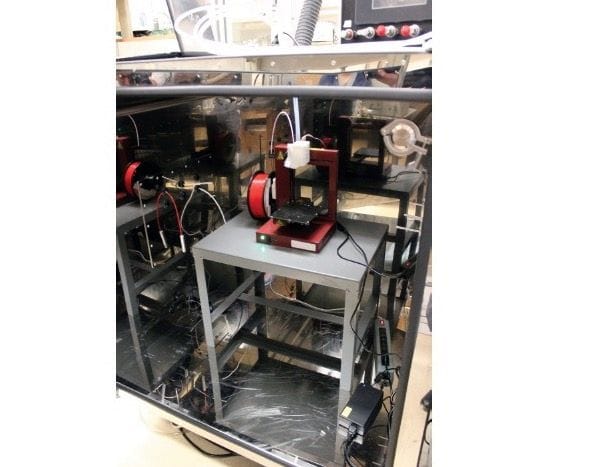![Testing for emissions with an official UL2904 testing rig [Source: UL]](https://fabbaloo.com/wp-content/uploads/2020/05/ul2904-ov_result_img_5eb09d2990f51.jpg)
UL finally published its standards on 3D print safety, and there are definitely going to be implications.
The new standard, formally named ANSI/CAN/UL2904, is a very comprehensive document describing emissions safety testing and standards for 3D printing. We’ve been waiting to see this for many years. The subtitle of the document is “Standard Method for Testing and Assessing Particle and Chemical Emissions from 3D Printers ”.
What was not understood by the early developers of 3D printers, and in particular desktop 3D printers, were the emissions generated by the devices when operating. Applying heat to common 3D printing filament materials not only softens them for extrusion, but also tends to release quantities of nanoparticles and volatile organic compounds (VOCs). For resin-based equipment there is no heat involved, but the liquid resins used can evaporate or otherwise come in contact with humans. Nearby operators and others are at risk of inhaling them and potentially developing various conditions in the future.
Some materials, notably ABS, are quite smelly when printed and it’s pretty obvious that you should be venting the polluted air far away from the 3D printer and its operators.
But a smell is pretty subjective, and it doesn’t even indicate the presence of non-smellable substances.
This standard should change all that. The document, 58 pages in length, includes considerable details on:
-
What to test for
-
How to perform tests
-
How to analyze results
-
Maximum allowed emissions
VOCs in particular are extensively investigated in UL2904, with dozens of specific substances listed, each with maximum allowed emission values.
I won’t go into the details of the document, as you can obtain your own freely from UL as an online download. There are paid options if you require a hardcopy, but for me the download worked well — you will need a copy of Adobe Acrobat Reader, however, as the document is secured and readable by only one computer per instance.
What puzzles me now is how the industry will react.
Today we have literally hundreds of small and large manufacturers producing 3D printers, virtually all of which have entirely ignored emissions and other safety considerations. These lapses in safety management have resulted in fires and even deaths due to poorly designed equipment.
But those are highly visible, relatively instantaneous incidents. What about the silent, long-term absorption of VOCs and nanoparticles? No one knows what will happen in the future.
I suspect all it will take is a few key 3D printer and material manufacturers to adopt the UL2904 standard through diligent and precise testing. My hope is that the public will see the certifications on the machine and its material to know it’s safe to use.
And correspondingly, they should know that machines and materials that do NOT have the certification should be avoided because it is not known if they are safe.
The testing described in UL2904 is considerable, and will require significant effort by a manufacturer to complete. I suspect it is actually beyond the means of some smaller manufacturers who would be unable to afford the effort. That could put out of business several smaller players, and perhaps even tip the machine pricing a bit higher to account for this work.
UL2904 should also force additional cooperation between material producers and equipment manufacturers. This is simply because an emissions test is of a machine AND a material printing. Both are a required part of the equation. Thus you would likely see a printer certified for use with material A, B, C, and so on, or a material certified to work safely with machine X, Y, or Z.
The end result should ultimately be a total clean up of the unsafe equipment that has flooded the 3D printing market.
This has not come too soon.
Via UL











We were able to view video footage of the 3D printing hair-caught incident from last week and have determined exactly how it occurred, and how to prevent it from happening again.